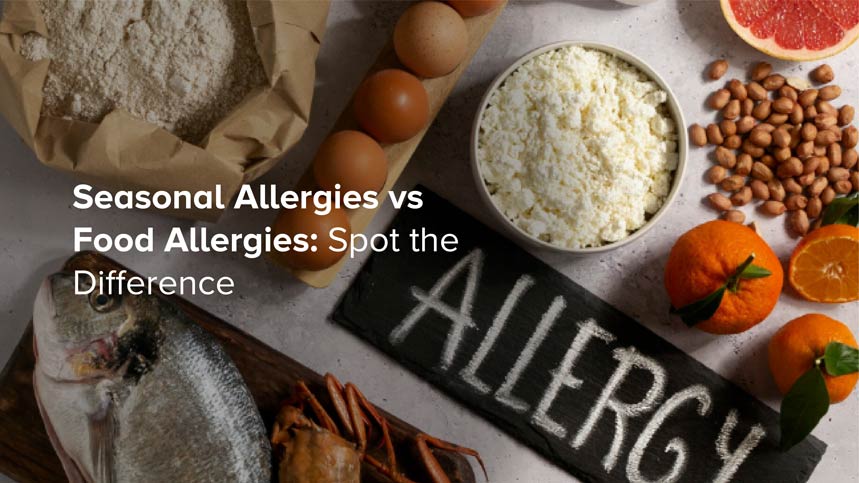


Condition
- Diabetes
- Preventive Health Checkup
- Top tests
- Heart Disease & Hypertension
- Allergy
- Anemia
- Arthritis
- Fever
- Kidney Disease
- Liver Disease
- PCOD
- Thyroid Disorder
- Vitamin Deficiency
- Infectious
- Endocrine Disorders
- Metabolic / Endocrine
- Blood Disorders
- Renal
- Neuro
- Metabolic Disorders
- Gastrointestinal
- Bleeding Disorder
- Genomics
- Pulmonary
- Others
- Oncology
- Gastrointestinal / Skeletomuscular
- Skeletomuscular
- Pulmonary / Metabolic
- Autoimmune
- Toxicity
- Genetics
- Antenatal Profile
- Dermatology / Autoimmune
- Bad Obstetric History
- Cardiovascular
- Autoimmune / Gastro
- Infectious / Oncology
- Blood Banking & Transfusion
- Genomics / Oncology
- Skeletomuscular / Renal
- Drug Monitoring
- Oncology/Infectious
- Oncology / Genomics
- Reproductive Genomics
- New Born Screening
- Skin/Infectious
- Renal / Diabetes
- Cardiovascular / Neuro
- Drugs of Abuse
- Prenatal Screening
- Profile
- Infectious/Derma
- Dermatology
- Gastrointestinal / Renal
- Autoimmune / Neuro
- Skeletomuscular / Autoimmune
- Skeletomuscular / Gastro
- Infectious / Autoimmune
- Renal / Oncology
- Skeletomuscular / Oncology
- Oncology / Skeletomuscular
- Pulmonary / Infectious
- Oncology / Gastrointestinal
- Ocular / Inherited
- Neuroendocrine / Oncology
- Autoimmune / Hemat
- Oncology/Neuro
- Autoimmune / Skeletomuscular
- Reproductive disorders
- Hormonal Disorders
- Infectious / Renal

Tests
- Am-Fit Healthy Womens Check - 2
- Am-Fit Healthy Womens Check - 1
- Am-Fit Shubh Health
- Am-Fit Freedom (1+1)
- Am-Fit Senior Citizen - Male
- Am-Fit Senior Citizen - Female
- Am-Fit Plus (With Vitamin D & B12)
- Am-Fit (With Vitamin D)
- Basic Health Check
- Comprehensive Health Check
- Executive Health Check
- Advance Health Check
- Senior Citizens - Male Check
- Senior Citizens - Female Check
- Am-Fit Freedom Plus (1+1)
- Am-Fit Freedom Plus
- Kids Check
Allergies occur when the body's immune system reacts to a substance that is normally harmless. While many people are familiar with the general concept of an allergic reaction, it is important to understand the distinctions between different types of allergies. Two of the most common categories are seasonal allergies and food allergies. Although both involve an immune response, they are triggered by different allergens, present distinct symptoms, and require different management strategies.
What Are Seasonal Allergies?
Seasonal allergies, medically known as seasonal allergic rhinitis or hay fever, are immune system responses to airborne allergens that are prevalent during certain times of the year. The body mistakenly identifies these harmless substances, such as pollen, as threats and releases chemicals like histamine, which cause allergy symptoms.
Common Triggers for Seasonal Allergies
The triggers for seasonal allergies are specific to the time of year and geographical location.
- Spring: Tree pollen from species like oak, birch, and maple is a primary trigger.
- Summer: Grass pollen from varieties such as ryegrass and timothy, as well as weed pollen, become more common.
- Fall: Weed pollen, particularly from ragweed, is a significant cause of fall allergies.
- Winter: In warmer climates, some plants may pollinate year-round. In colder regions, indoor allergens like mold and dust mites can worsen during winter when people spend more time indoors.
Symptoms of Seasonal Allergies
Symptoms of seasonal allergies primarily affect the respiratory system and eyes. They are often predictable and recur around the same time each year.
- Nasal Symptoms: Sneezing, a runny or stuffy nose (rhinorrhea), and an itchy nose.
- Eye Symptoms: Itchy, red, or watery eyes (allergic conjunctivitis).
- Throat and Ear Symptoms: An itchy throat, postnasal drip, and congestion in the ears.
- General Symptoms: Fatigue and coughing may also occur.
It is important to note that seasonal allergies do not typically cause hives, swelling, or digestive issues.
What Are Food Allergies?
A food allergy is an adverse immune response to a specific food protein. When a person with a food allergy consumes the trigger food, their immune system releases histamine and other chemicals, leading to a range of symptoms that can be severe and potentially life-threatening.
Common Food Allergy Triggers
While any food can cause an allergic reaction, eight foods account for approximately 90% of all food allergies.
- Milk
- Eggs
- Peanuts
- Tree nuts (such as walnuts, almonds, and cashews)
- Soy
- Wheat
- Fish
- Shellfish (such as shrimp, crab, and lobster)
Symptoms of Food Allergies
Food allergy symptoms can affect multiple body systems and typically appear within minutes to two hours after consumption.
- Skin Reactions: Hives, itching, eczema, or swelling (angioedema) of the lips, face, and tongue.
- Gastrointestinal Symptoms: Abdominal pain, vomiting, or diarrhea.
- Respiratory Symptoms: Wheezing, shortness of breath, coughing, or a tight feeling in the throat.
- Cardiovascular Symptoms: Dizziness, lightheadedness, or a drop in blood pressure.
In severe cases, a food allergy can lead to anaphylaxis, a life-threatening reaction that requires immediate medical attention and administration of epinephrine.
Key Differences Between Seasonal and Food Allergies
Understanding the distinctions between these two conditions is essential for accurate diagnosis and management.
- The Nature of the Allergen
- Seasonal Allergies: Triggered by airborne environmental substances like pollen and mold spores. Exposure is typically through inhalation.
- Food Allergies: Triggered by specific proteins in foods. Exposure occurs through ingestion.
- Symptom Presentation
- Seasonal Allergies: Symptoms are generally localized to the upper respiratory tract, eyes, and throat. They are uncomfortable but rarely life-threatening.
- Food Allergies: Symptoms can be systemic, affecting the skin, gastrointestinal tract, and respiratory and cardiovascular systems. They have the potential to cause severe, life-threatening anaphylaxis.
- Onset of Symptoms
- Seasonal Allergies: Symptoms can develop gradually over days or weeks as pollen counts rise.
- Food Allergies: Symptoms usually appear rapidly, often within minutes to a couple of hours after eating the trigger food.
- Duration of Symptoms
- Seasonal Allergies: Symptoms persist for the duration of the pollen season, which can last for several weeks or months.
- Food Allergies: An acute reaction typically resolves within a few hours, especially with treatment, although milder symptoms like hives can linger for a day or two.
Diagnosis and Treatment
The diagnostic process and treatment approaches differ significantly for seasonal and food allergies.
Diagnosing Allergies
A board-certified allergist can perform tests to confirm an allergy.
- For Seasonal Allergies: A skin prick test, where small amounts of common environmental allergens are applied to the skin, is the standard diagnostic tool. A blood test (ImmunoCAP) can also measure specific IgE antibodies to pollen.
- For Food Allergies: Diagnosis may involve a skin prick test, a blood test, and often an oral food challenge. The oral food challenge, conducted under strict medical supervision, is the gold standard for confirming a food allergy.
Treatment and Management
- Seasonal Allergies: Management focuses on avoiding allergens when possible (e.g., staying indoors on high-pollen days) and using medications. Over-the-counter or prescription antihistamines, nasal corticosteroid sprays, and decongestants are common treatments. For long-term relief, an allergist may recommend allergy shots (immunotherapy).
- Food Allergies: The primary management strategy is strict avoidance of the trigger food. This requires diligent reading of food labels and clear communication about the allergy when dining out. For accidental exposure, individuals with a history of severe reactions must carry an epinephrine auto-injector (such as an EpiPen) at all times.
Conclusion
Differentiating between seasonal and food allergies is crucial for your health and safety. While seasonal allergies are typically a source of discomfort, food allergies can pose a serious and immediate risk. If you suspect you have an allergy of any kind, it is essential to consult with a healthcare professional for an accurate diagnosis and a personalized management plan.
At AMPATH Labs, we offer a comprehensive range of diagnostic tests to help identify the specific cause of your symptoms. Our state-of-the-art facilities and certified professionals ensure you receive accurate and timely results, empowering you to take control of your health with confidence.
WANT TO BOOK HEALTH CHECKUP ?
Categories
Diabetes
44
Preventive Health Checkup
53
Genomics
1
Others
81
Pulmonary / Infectious
1
Top tests
101
Genetics
1
Gastrointestinal / Skeletomuscular
2
Blood Banking & Transfusion
16
Lifestyle Packages
35
Vitamin Deficiency
12
Heart Disease & Hypertension
37
Allergy
9
Blood Disorders
3
Fever
4
Profile
1
Kidney Disease
8
Thyroid Disorder
5
Liver Disease
6
Anemia
5
Arthritis
4
Infertility
6
PCOD
3
Bone Health
1
Cancer
1
Fatty Liver
1
Recent Blogs
What is Absolute Eosinophil Count (AEC)?
What is Absolute Eosinophil Count (AEC)? A blood test can reveal a great deal...
05-12-2025
ESR Levels: High vs. Low – What They Mean for Your Health
ESR Levels: High vs. Low – What They Mean for Your Health The Erythrocyte...
05-12-2025
How to Choose the Right Blood Test Centre?
How to Choose the Right Blood Test Centre? Choosing the right blood test centre...
05-12-2025





-and-Why-It-Matters.jpg)

